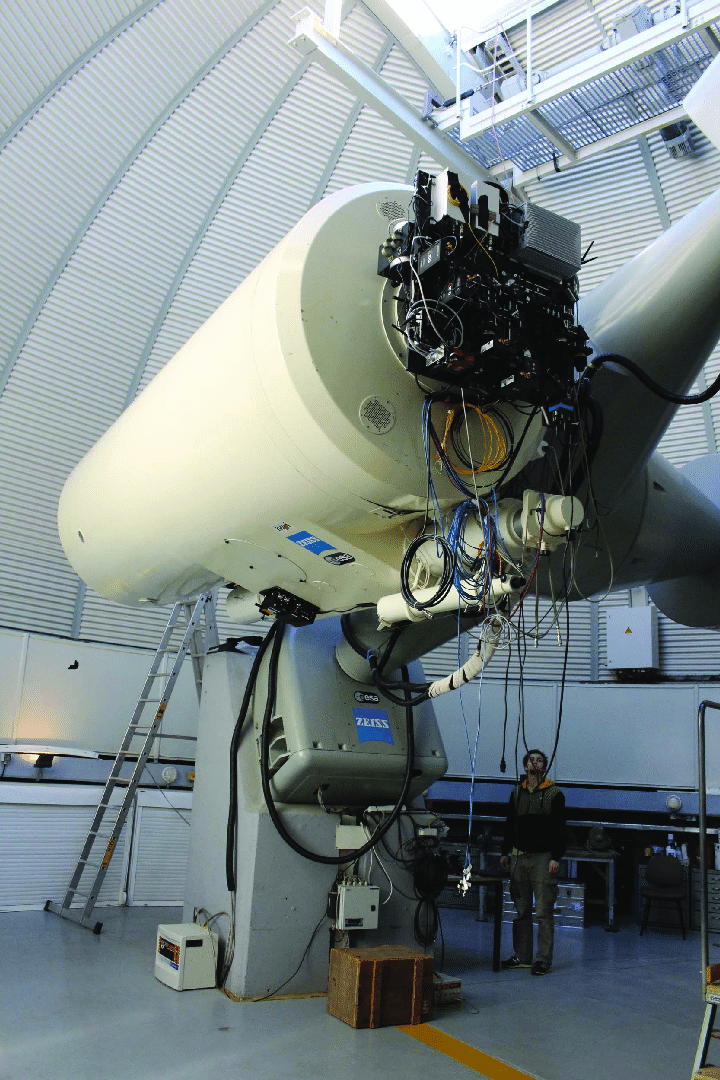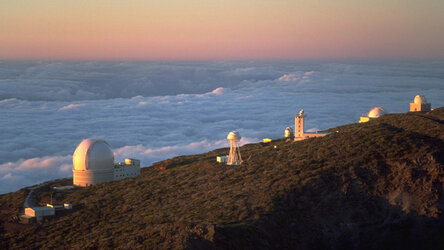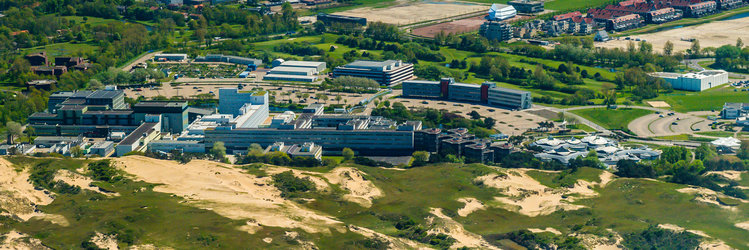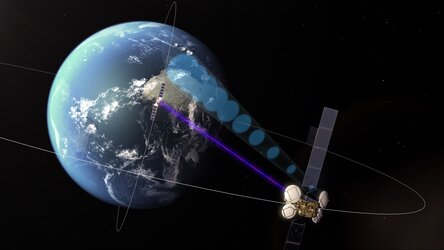ESA renews focus on Canary Islands for laser operations
Their winning combination of high altitudes and clear skies make Spain’s Canary Islands one of the world's best locations for astronomy. Now ESA has signed an agreement with the organisation running the Islands’ observatories to expand their role in laser-based communication for space missions, as well as space debris monitoring and removal.
Optical communications – using lasers to signal across space – offers much higher bandwidth and security than its radio-based equivalent. ESA has agreed with the Instituto de Astrofísica de Canarias (IAC) to extend and expand its existing activities in Tenerife as an ‘anchor site’ to install optical ground stations for operational two-way satellite to ground links and for developing laser-based space debris removal techniques.
This agreement was signed on ESA’s behalf by Franco Ongaro, Director of Technology, Engineering and Quality, and Rolf Densing, Director of Operations, in the presence of Günther Hasinger, Director of Science. It was signed on the IAC side by, Rafael Rebolo, Director of the IAC, in the presence of Miquel Serra Ricart, Administrator of Teide Observatory.

The ceremony took place in advance of a meeting held at ESA’s ESTEC technical centre in the Netherlands, the 81st meeting of the International Scientific Committee of the Canary Islands Observatories. The event commemorated 40 years of the signing of the treaty through which these observatories were internationalised.
ESA’s Optical Ground Station, part of the IAC’s Teide Observatory some 2400 m above sea level on Tenerife, has been operational since 1997, incorporating a 1-m aperture telescope and equipment to send and receive laser signals.
The OGS is used to test laser communication terminals aboard satellites in low and geostationary orbits, as well as for deep-space usage and for precision tracking of space debris.

It is also being used to develop ‘laser ranging to debris objects’, a technique that aims ultimately to enable small debris objects to be nudged out of orbit.
The site has helped test optical terminals, now in use aboard the European Data Relay Satellite constellation, relaying Copernicus Sentinel Earth observation data to end users.
It has been employed for quantum communication testing – in 2012 it was used for a record-breaking quantum teleportation experiment to adjacent Jacobus Kapteyn Telescope on La Palma, 143 km away.
The OGS is also used for asteroid and near-Earth object observations and purely as a telescope for astronomical research by ESA and IAC teams.


Access the video














 Germany
Germany
 Austria
Austria
 Belgium
Belgium
 Denmark
Denmark
 Spain
Spain
 Estonia
Estonia
 Finland
Finland
 France
France
 Greece
Greece
 Hungary
Hungary
 Ireland
Ireland
 Italy
Italy
 Luxembourg
Luxembourg
 Norway
Norway
 The Netherlands
The Netherlands
 Poland
Poland
 Portugal
Portugal
 Czechia
Czechia
 Romania
Romania
 United Kingdom
United Kingdom
 Slovenia
Slovenia
 Sweden
Sweden
 Switzerland
Switzerland




























